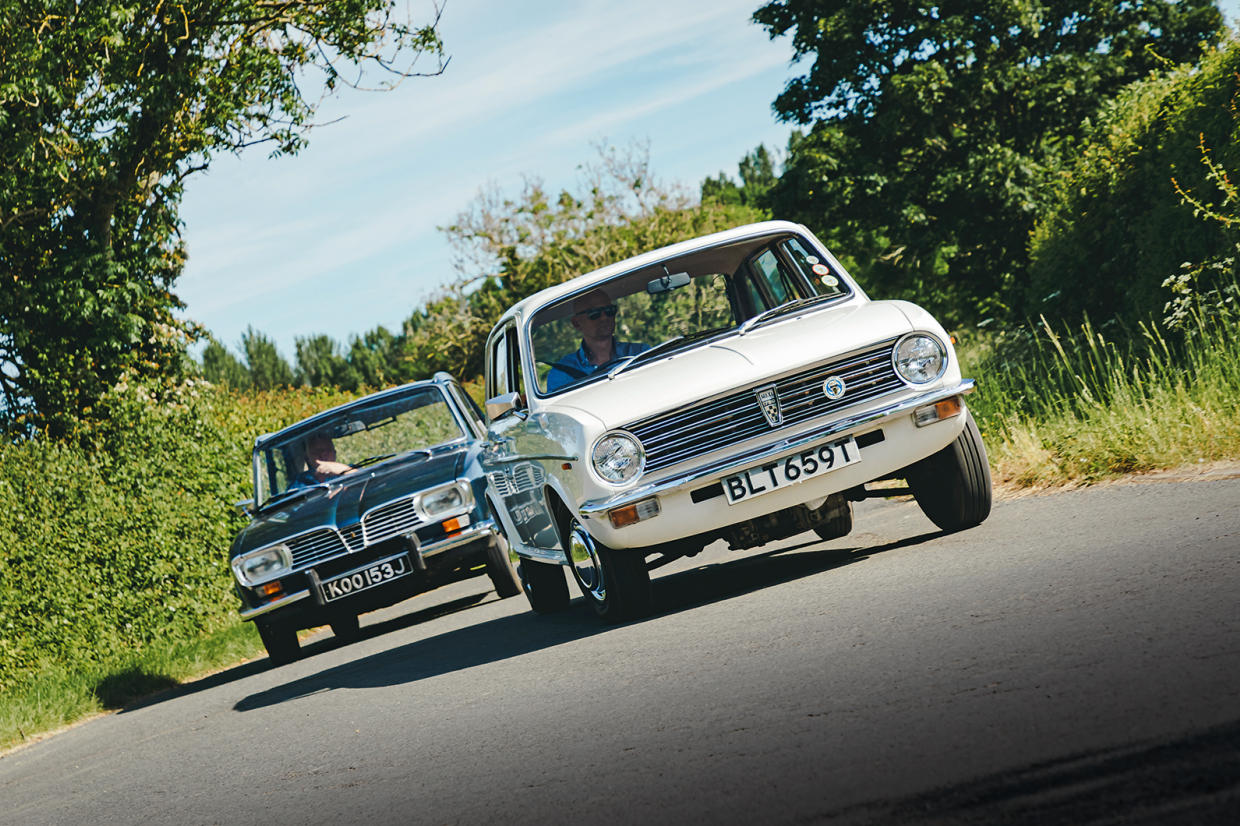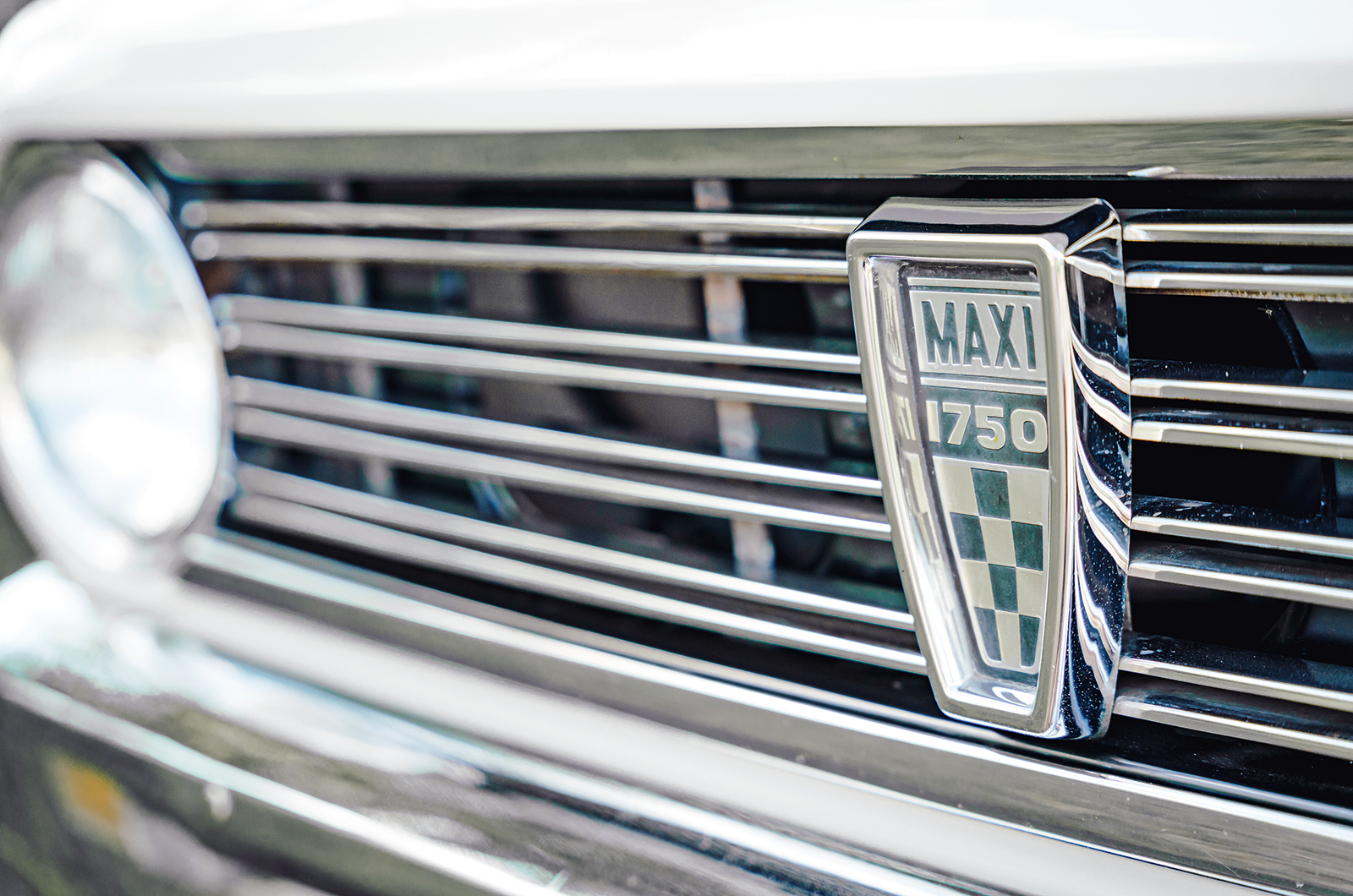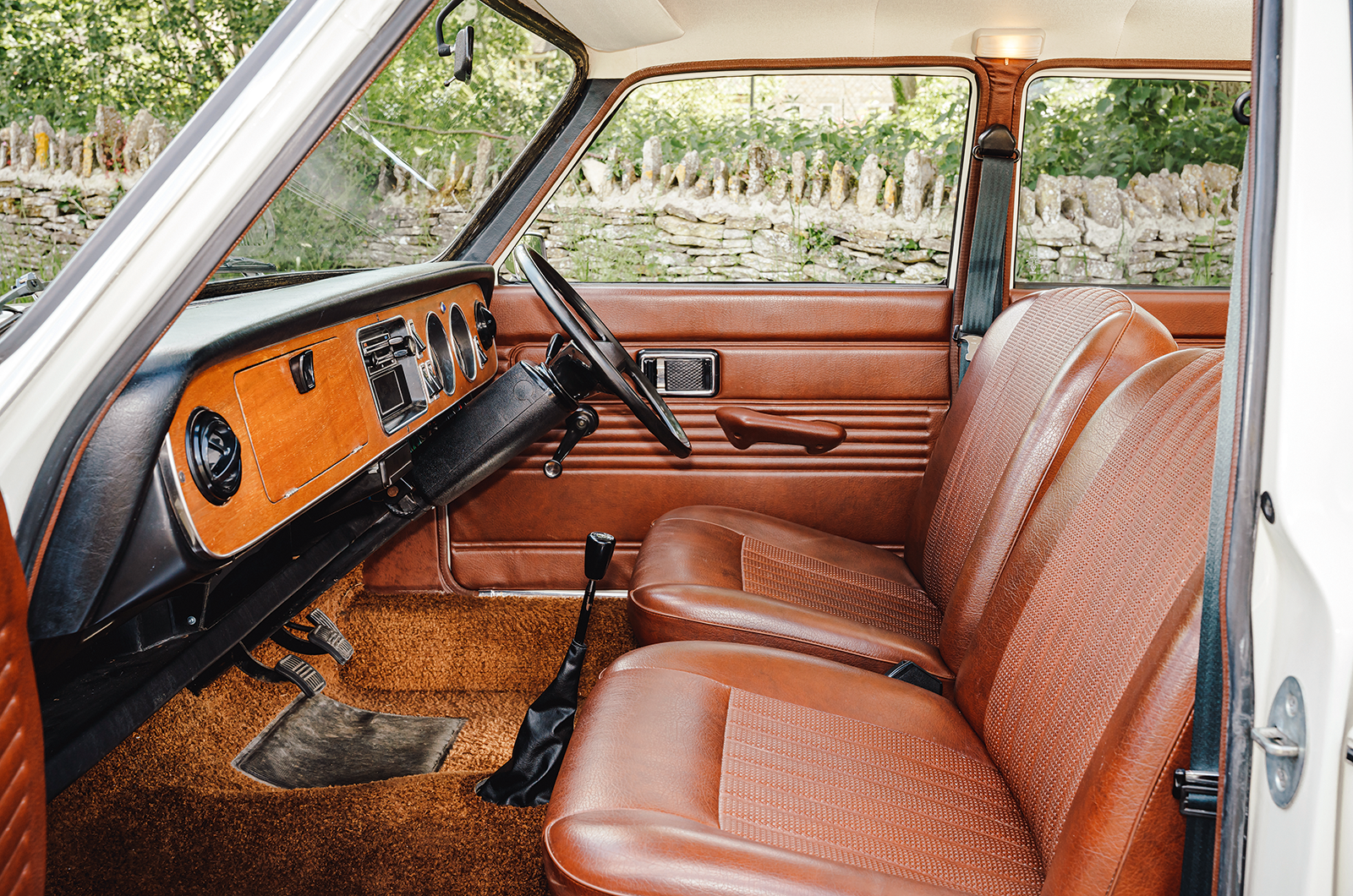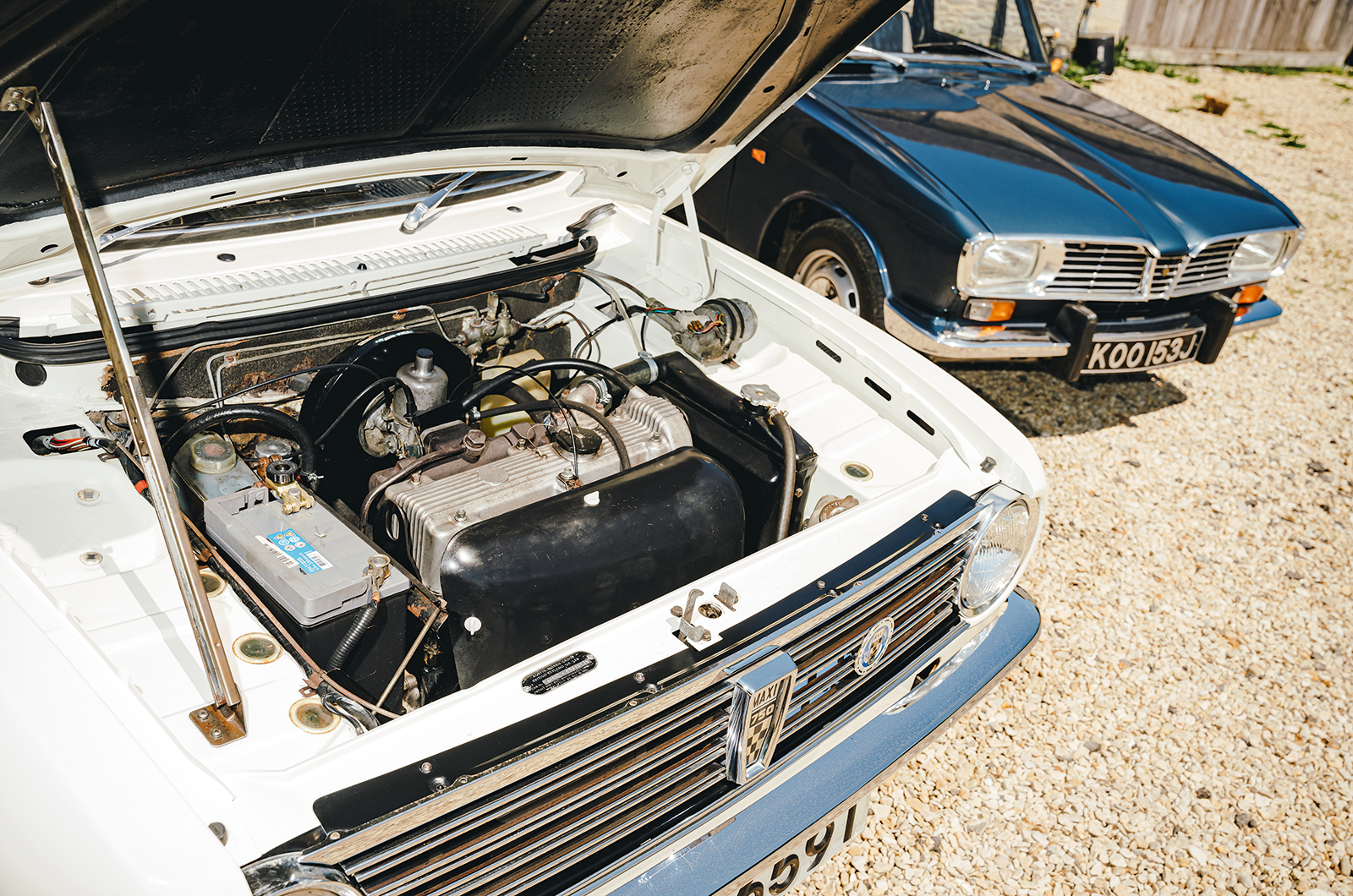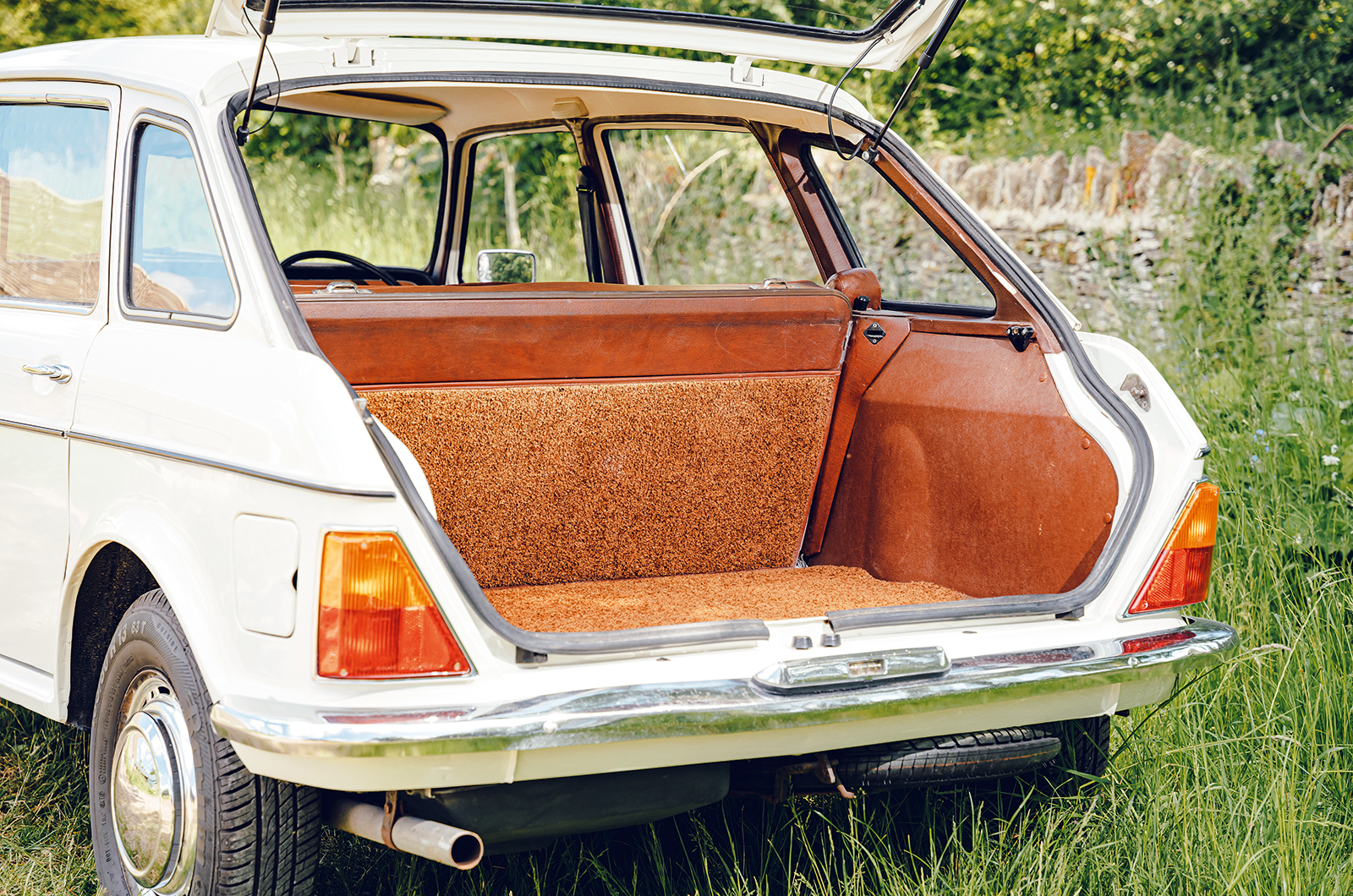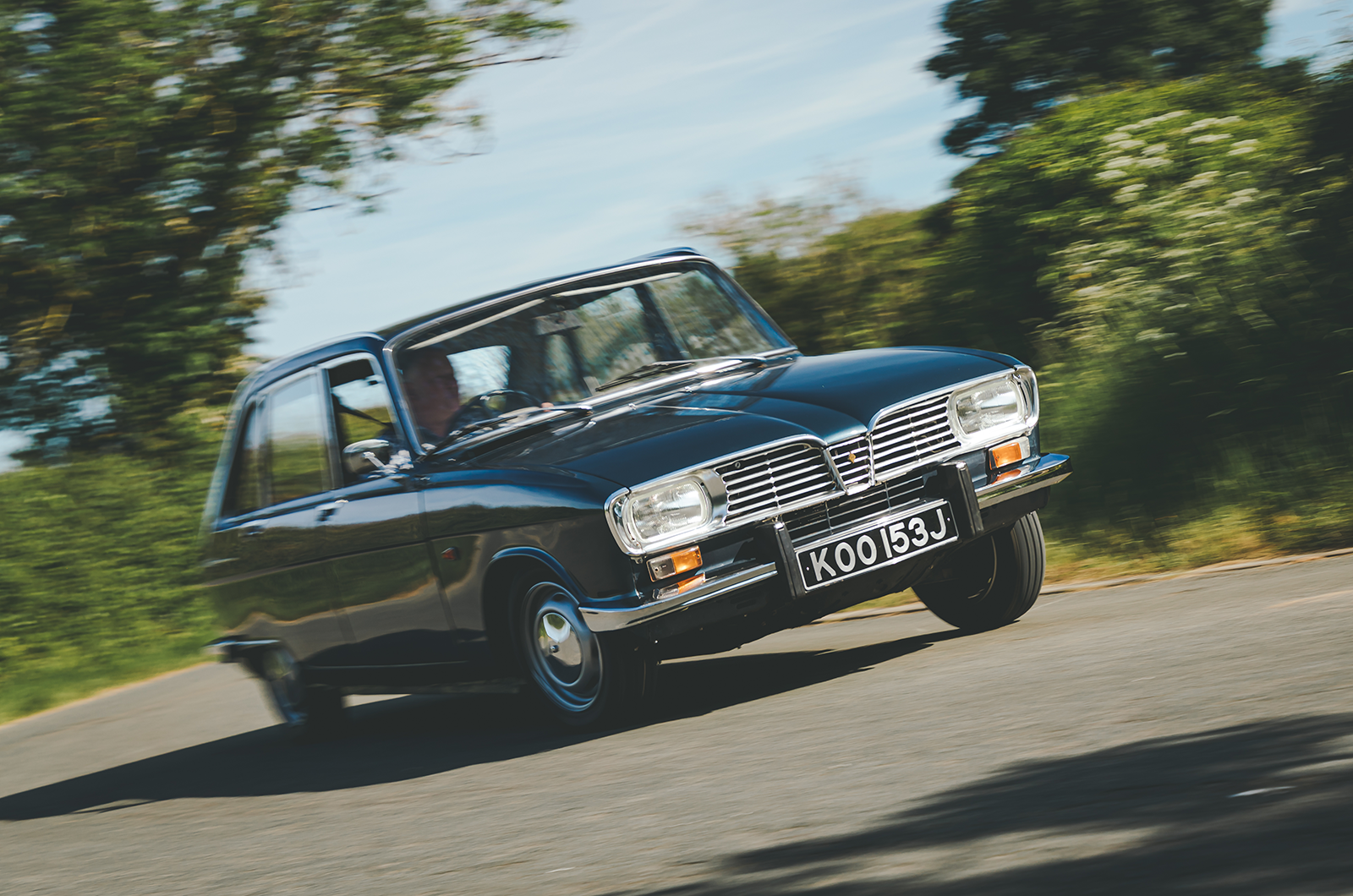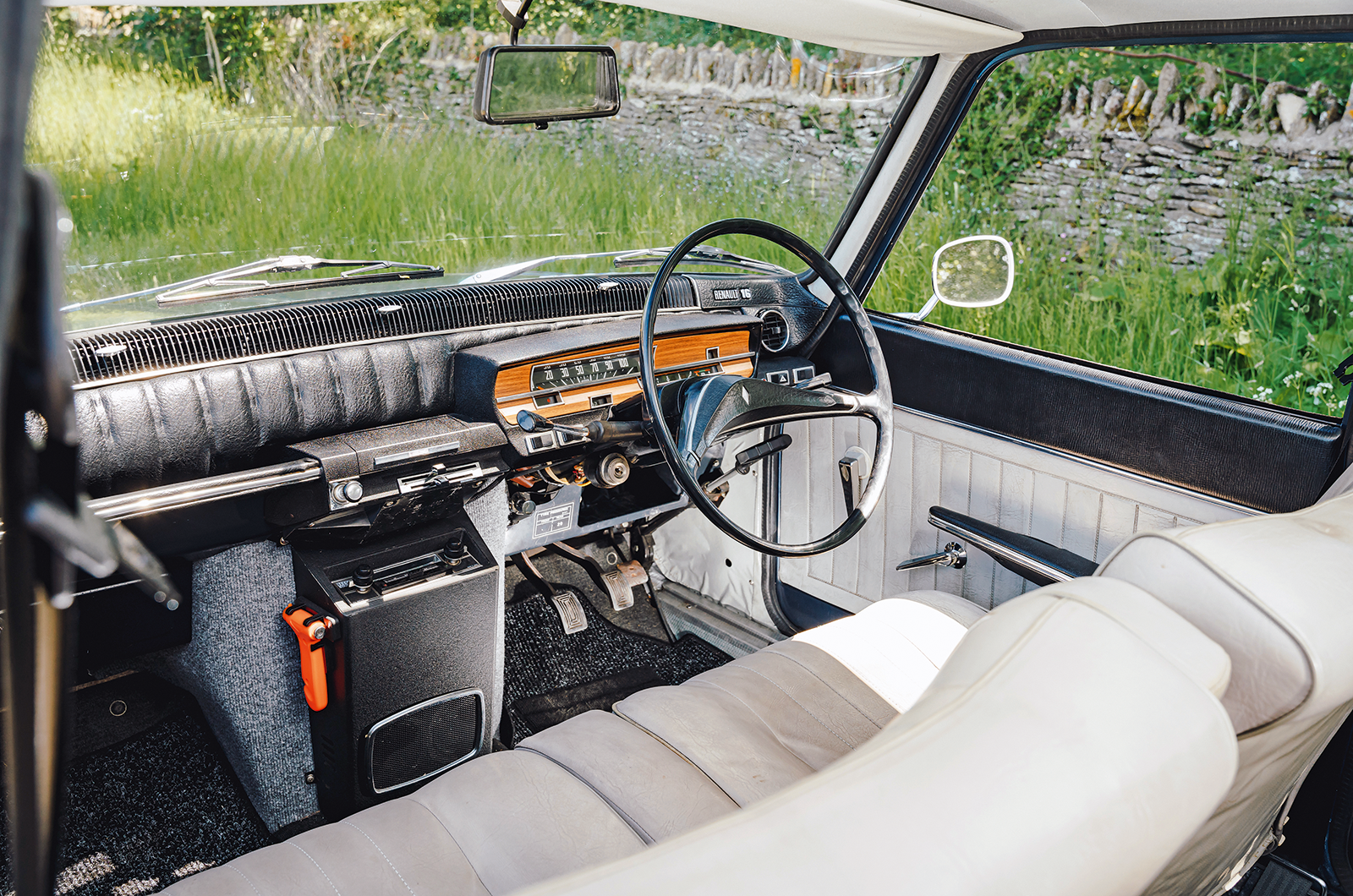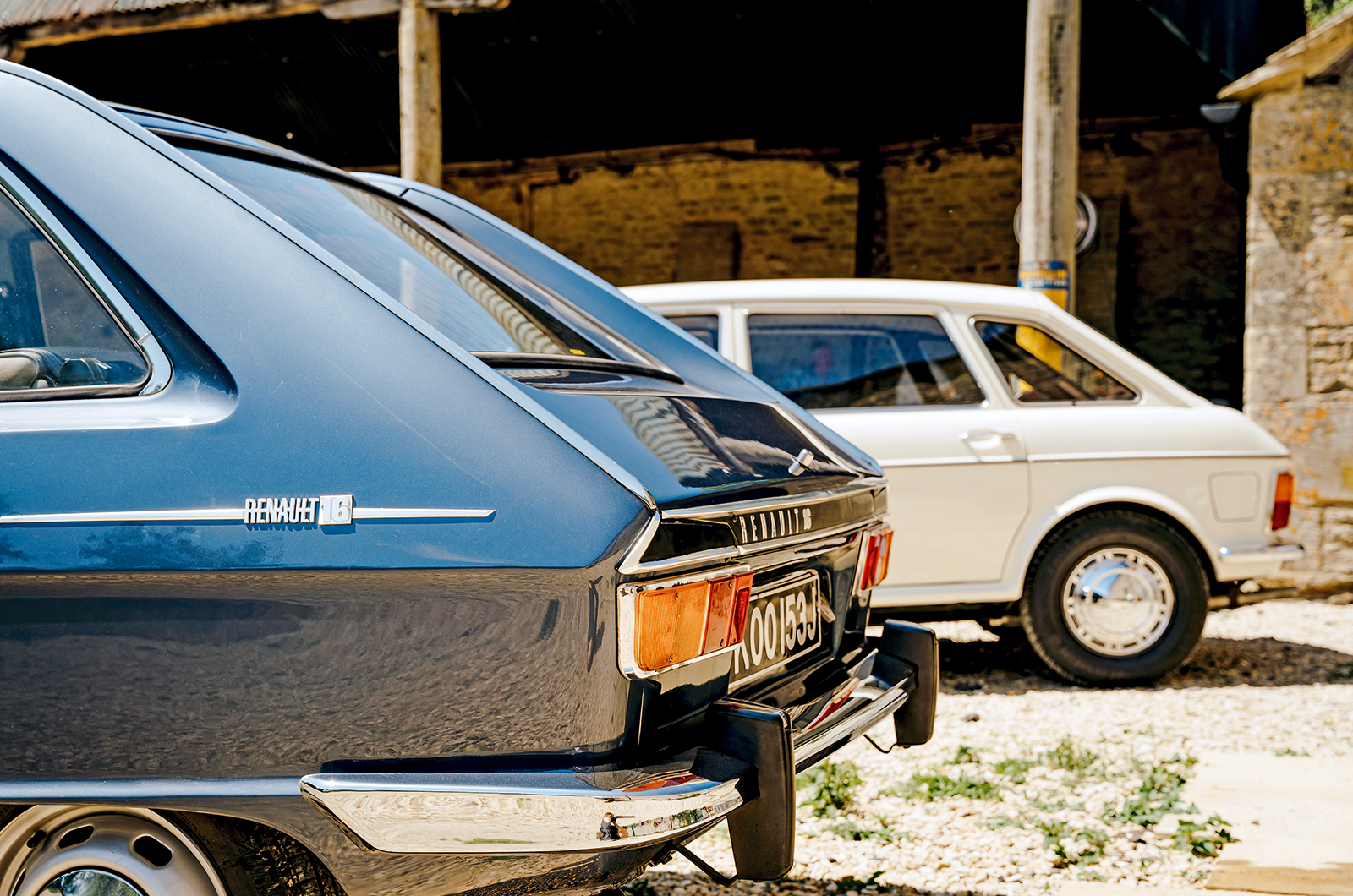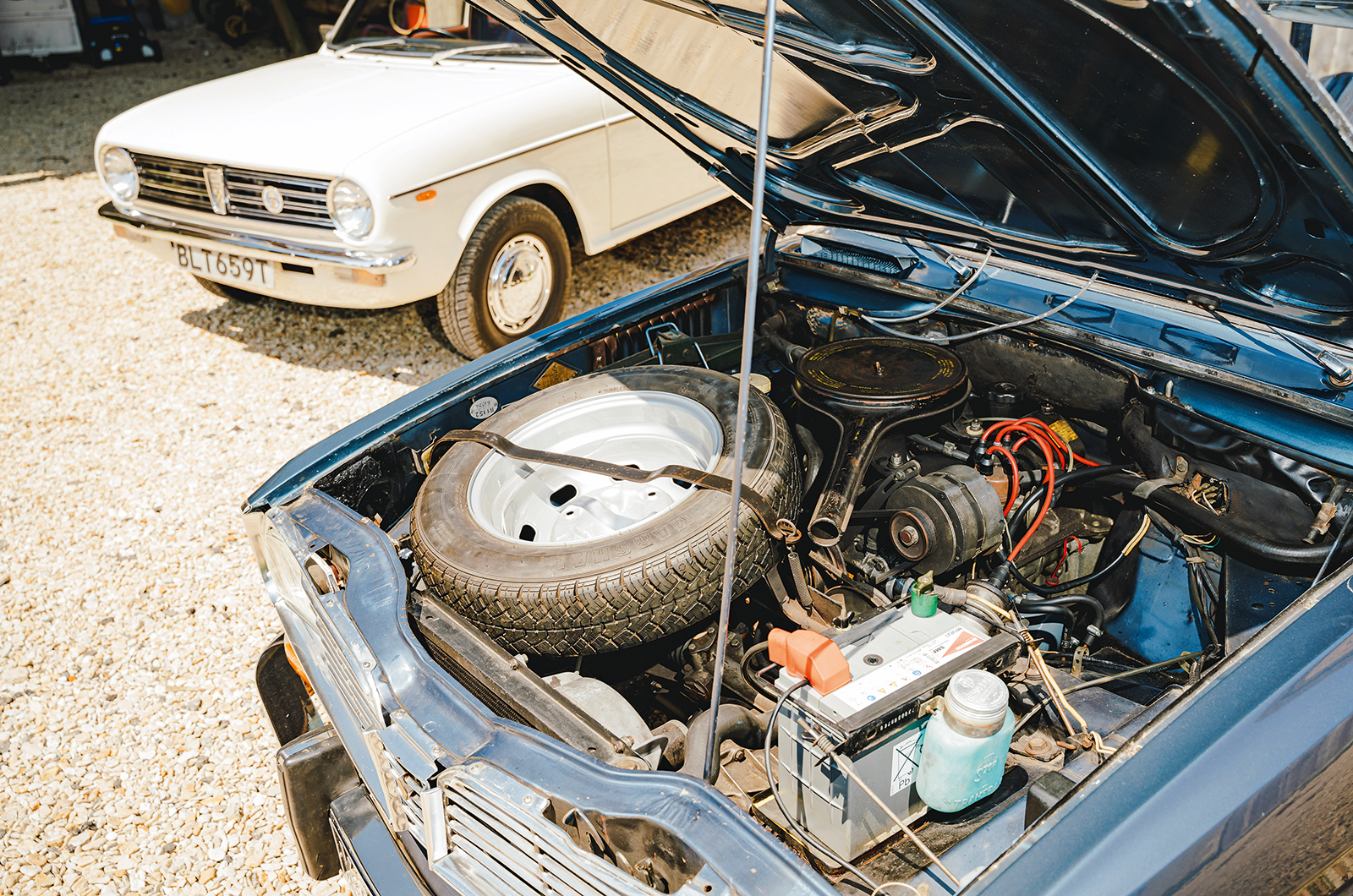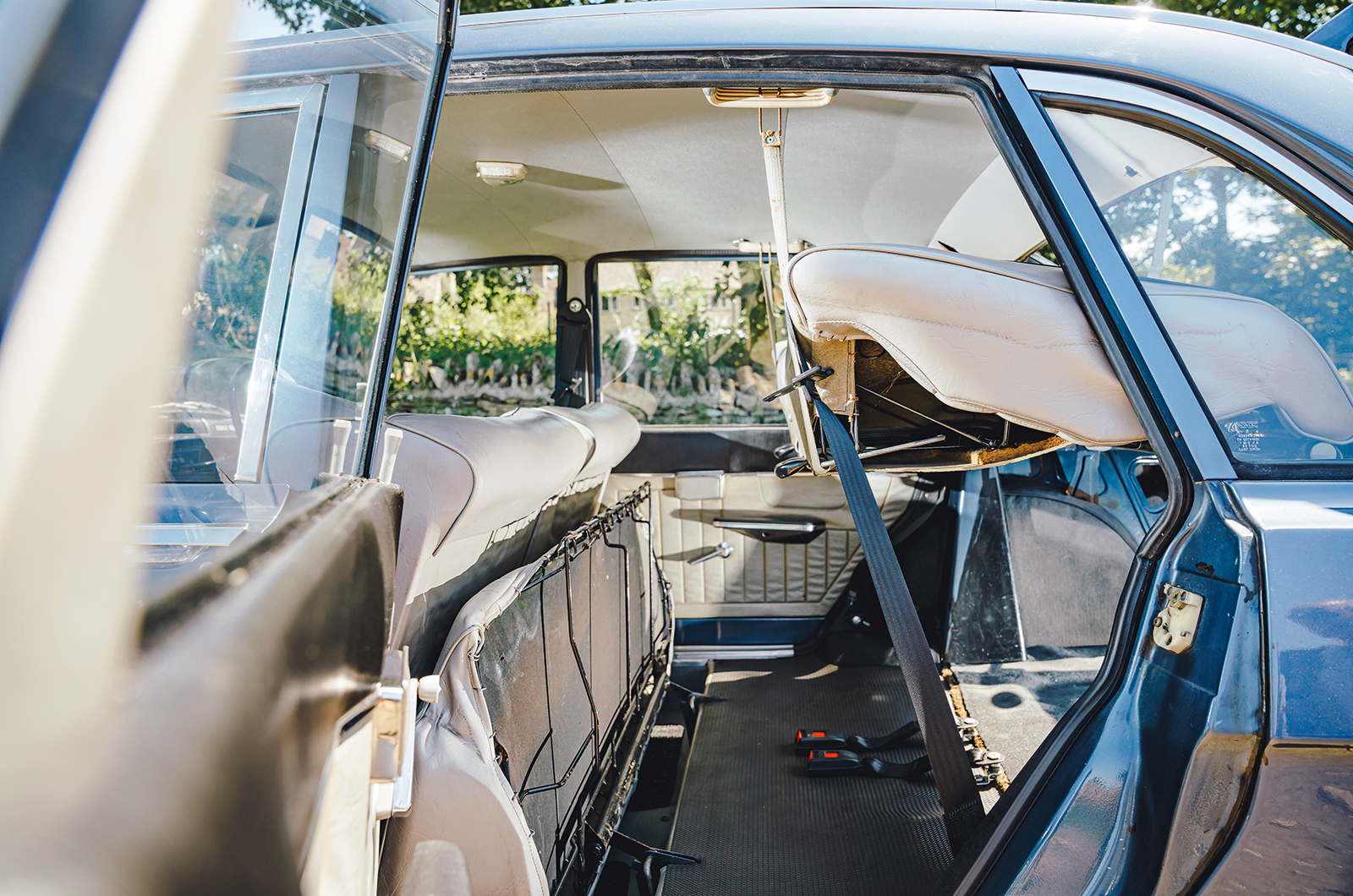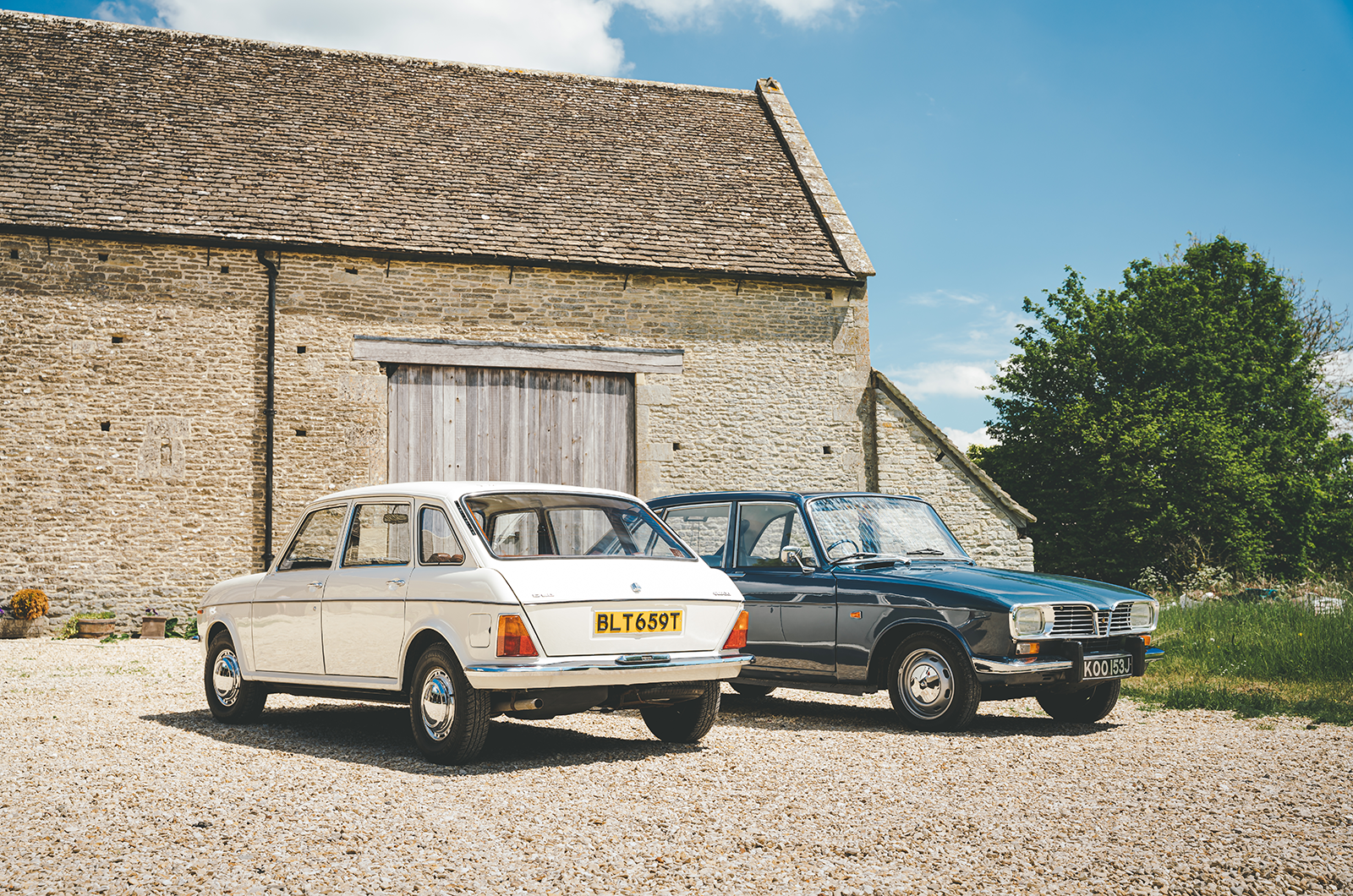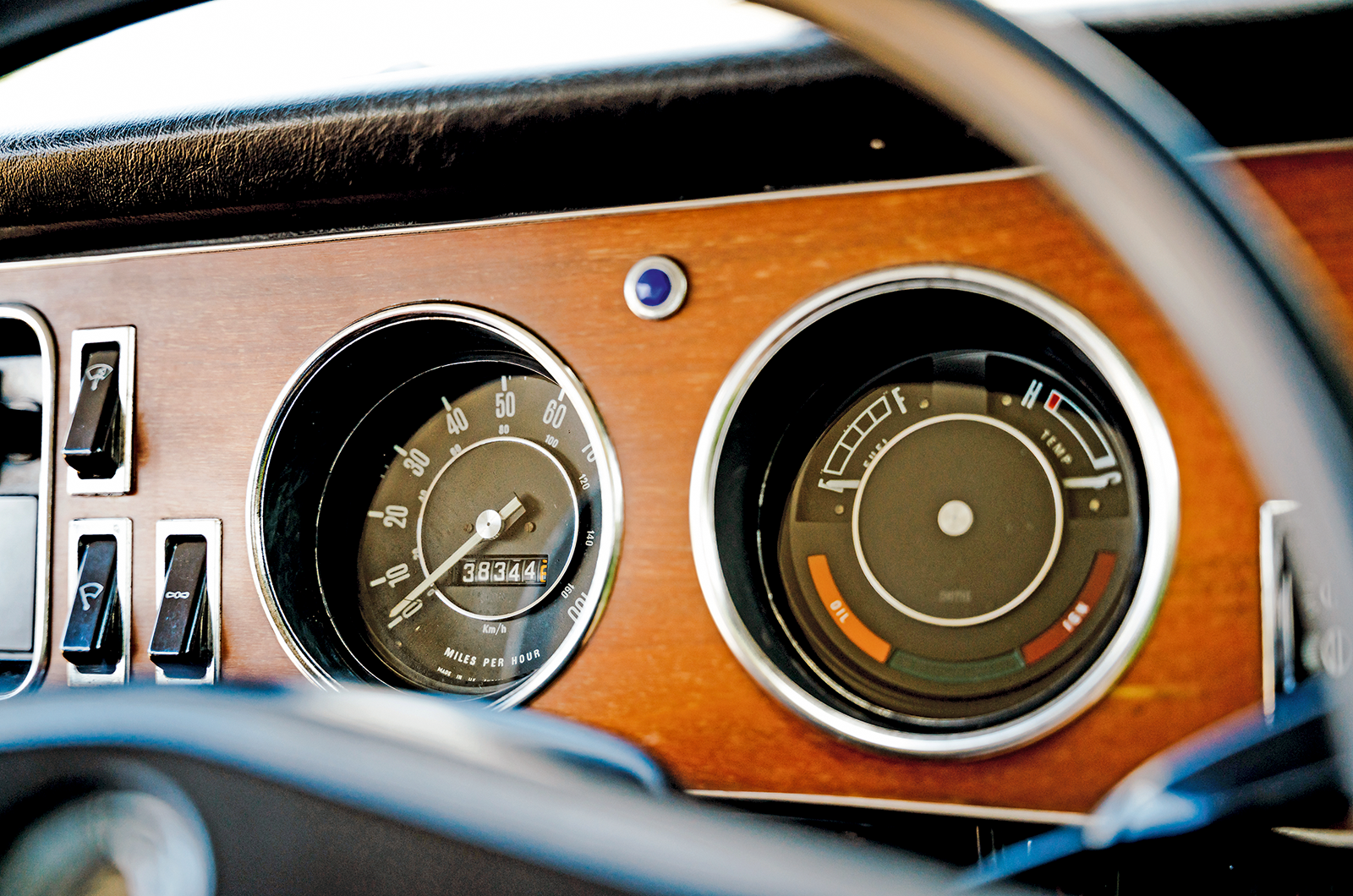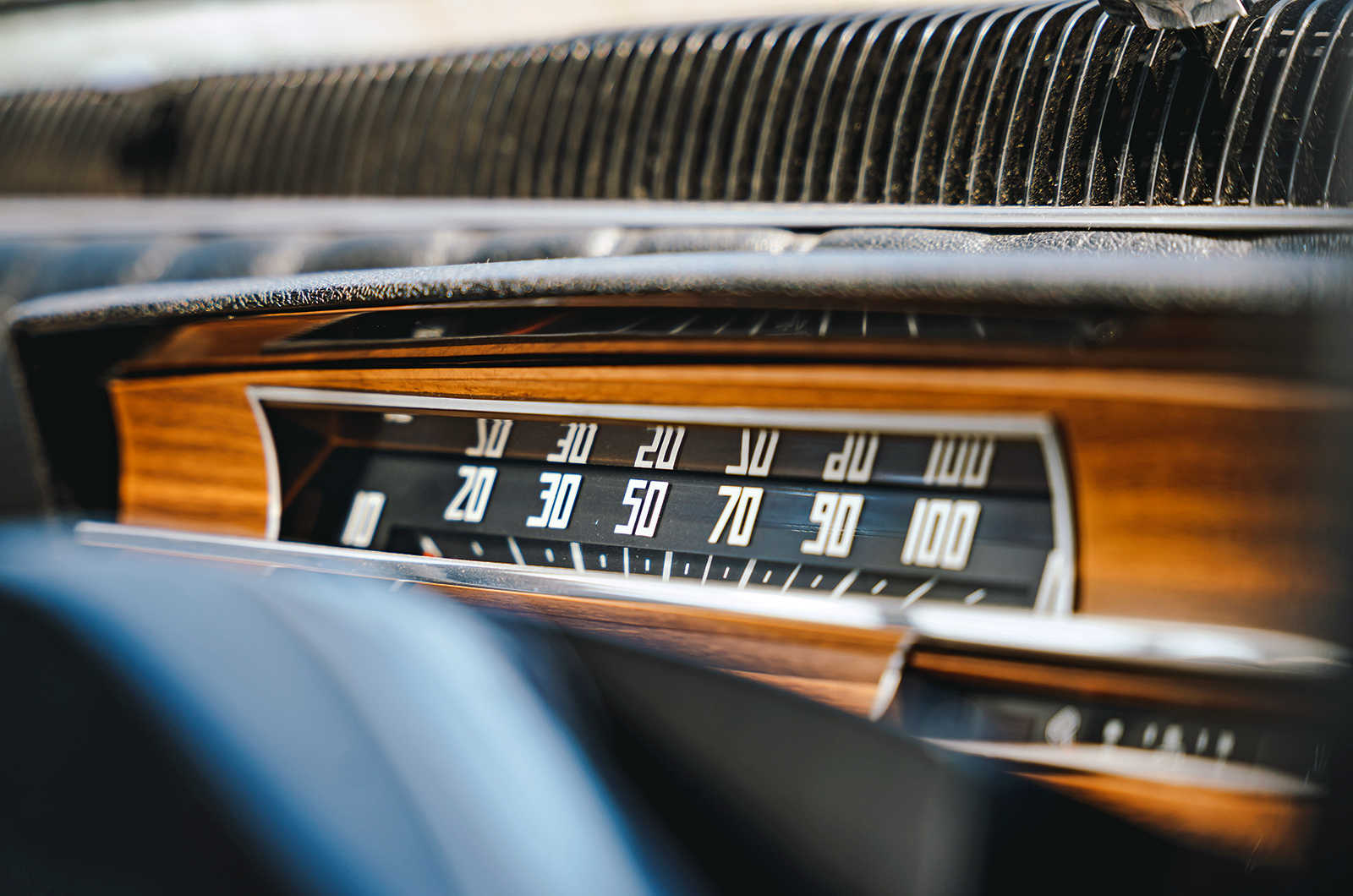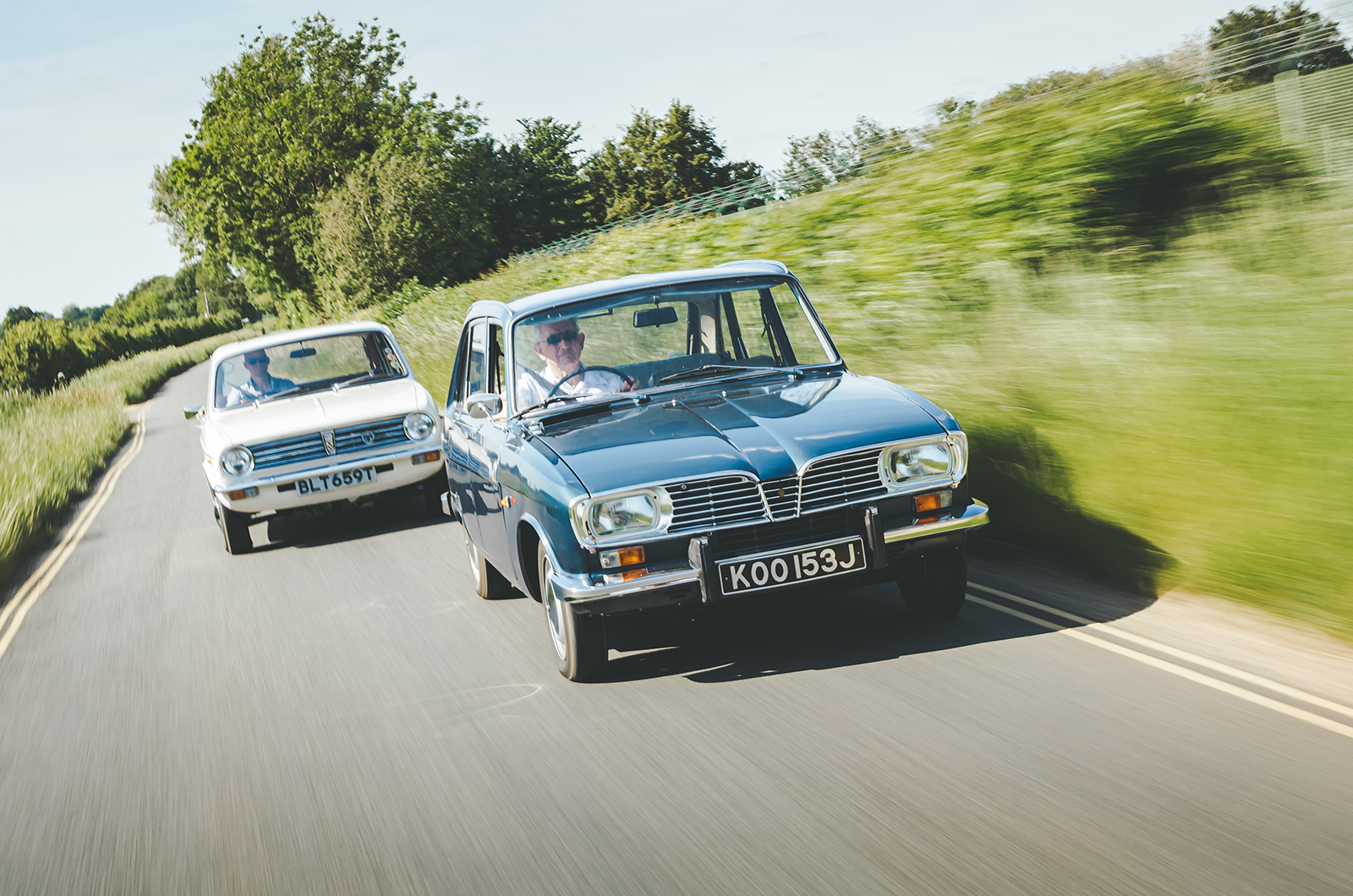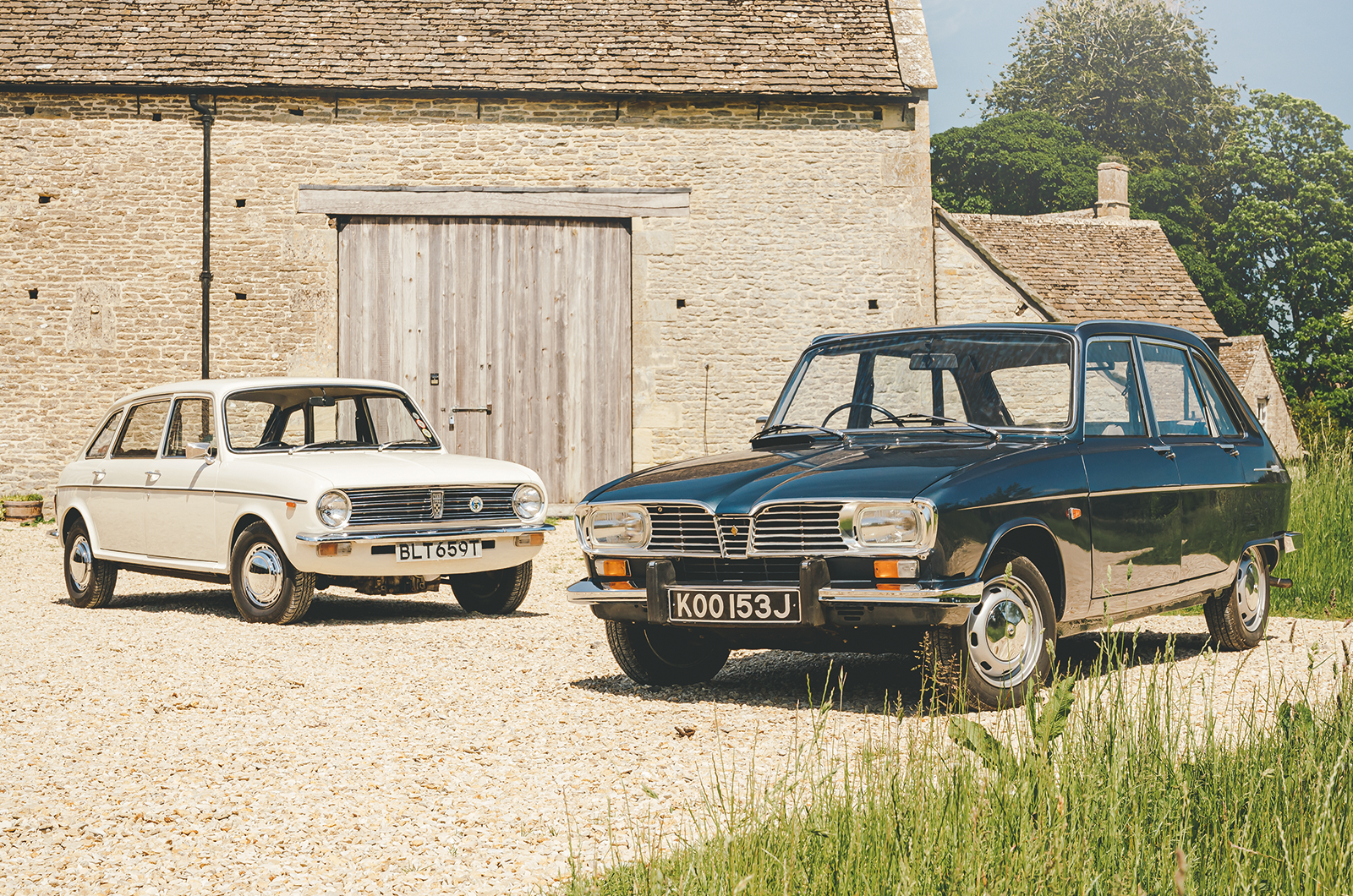Visually the Renault has more charm with its deep windows, rakishly sloping tail and ‘finned’ roof.
Yet the Maxi looks nowhere near as unappealing as I remember: it is a pugnacious, low-slung, wheel-at-each-corner piece of utility that, in its way, is as distinctive as the Renault.
Viewed as a roomy-for-its-size people-mover the Maxi was a packaging success at the very least; its much-touted fifth door was a last-minute addition.
On the basis of versatility and spaciousness, it’s round one to the Maxi (just) with its wide, low-silled tailgate and slightly greater load area with the back seats folded, and superior rear-seat legroom with them reinstated. However, the R16’s soft, plush chairs are a cut above.
Wooden inlays add a touch of glamour to the Austin’s shallow, slender dashboard (left); the R16’s wood-capped strip speedo is very much of its time
There’s more appeal to the Renault’s cabin with its sliver of fake wood around the ribbon speedometer and idiosyncratic detailing that somehow lets you know you are in a French car.
The heater controls look like something from a domestic boiler and sit down by your right knee.
The Maxi has wood, too, but it’s hard to warm to the steeply raked, Mini-like steering-wheel position.
The low seatbacks, bereft of headrests, give you a slightly vulnerable feeling, but the all-round vision is superb and the airy atmosphere of the roomy cabin creates the positive vibe of a cheerful car going about its business.
The large, thin, two-spoke wheel offers a clear view of the instruments and the road ahead in the Renault 16’s spacious two-tone cabin
The engine has decent torque, so you don’t need to rev it hard.
There’s a coarse edge to its unmusical hum but, combined with the transmission whine (from its transfer gears and nine cogs in mesh at any one time), it’s more nostalgic than grating.
There’s a gear for every occasion in the five-speed ’box, which can be moved easily and fairly quickly around its slightly sloppy gate as you wind the Maxi along. The steering position doesn’t feel like a problem now and, best of all, it is precise and light.
The Maxi rolls very little in corners and pulls itself neatly through them to fully justify the front-wheel-drive layout.
On the other hand, the bouncy low-speed ride hardly does justice to the supposed sophistication of the interconnected Hydragas suspension system, though it copes well at higher speeds.
The Austin Maxi came late to the party started by the Renault 16
Most cars would struggle to match the superbly comfortable Renault in the way it glides serenely and unfazed. Its sweet engine revs its heart out in every gear, worked by a light, precise and nearly idiot-proof column change.
It feels natural to use it freely to get the best out of the R16, although the flexibility is quite good – it is not quick in any ultimate sense, but has a willing nature verging on the sporty.
It is equally content to lollop along in top, feeling somehow less fussy in fourth than the Maxi in fifth.
Corners taken fast look more alarming than they feel and the Renault hangs on well despite the prodigious body roll, tidy enough as long as you don’t ask it to make sharp changes of direction in quick succession.
The steering is slightly heavier than the Maxi’s but it’s not a deal-breaker: on his other R16 Allen, being 76 years young, has fitted electric assistance.
1.8m Renault 16s were produced
The Maxi was not just the last production car from Sir Alec Issigonis, but also Leyland’s final chance to build a real winner in a market sector that was rapidly shaping up to be the most bitterly fought of all.
Brilliant as a creator of small cars, Issigonis had a way of sucking the joy out of bigger vehicles with his austere, ‘I know best’ approach, something all too manifest in the chillingly unglamorous Maxi 1500.
The facelifted post-1970 Maxi was so much better that it almost deserved a new name (something the Maxi 2 got in 1980).
Maybe if Leyland had combined a judicious rechristening with a more appealing body, this eminently practical and strangely appealing machine might have won more friends.
The Maxi and R16 are different solutions to the same motoring question
The R16, in the face of the Maxi’s perceived shortcomings, only got more popular.
Priced to within a few pounds of its BL rival it spearheaded the foreign assault on the British market (some 64,000 were sold in the UK up to 1974 alone), as an ever-weaker Leyland grappled with poor labour relations and low productivity.
At 412,121 in 12 years, ADO14 never achieved anything like the hoped-for sales but it remained the only real British alternative to the R16.
Even in the late ’70s sales of 30,000 a year could be depended on from a loyal home-market following that appreciated its unpretentious utility.
The rear fuel filler keeps the sides flat and skinny wheels accentuate the R16’s generous roll in bends, while the Austin’s stance appears almost squat
That said, it doesn’t pay to get too misty-eyed about its fate when the R16 was a better resolved and more significant car with charm to burn, created by engineers with a clear vision and enabled by management brave enough to let them get on with it.
Management, interestingly, that answered to the French government.
Like the Maxi, the R16 is the product of a state-owned manufacturer, which just goes to show that nationalisation isn’t always a bad thing.
Images: Max Edleston
Factfiles
Austin Maxi 1750
- Sold/number built 1968-’80/412,121
- Construction steel monocoque
- Engine all-iron, sohc 1748cc ‘four’ with single SU HS6 carburettor
- Max power 84bhp @ 5000rpm
- Max torque 105Ib ft @ 2500rpm
- Transmission five-speed manual, FWD
- Suspension independent, with interconnected Hydrolastic/Hydragas units
- Steering rack and pinion
- Brakes discs/drums
- Length 13ft 2¼in (4021mm)
- Width 5ft 5in (1629mm)
- Height 4ft 6¼in (1412mm)
- Wheelbase 8ft 8½in (2644mm)
- Weight 2170Ib (984kg)
- 0-60mph 15.3 secs
- Top speed 91mph
- Mpg 28
- Price new £1103
- Price now £5000*
Renault 16 TL
- Sold/number built 1964-’80/1,845,959
- Construction steel monocoque
- Engine all-alloy, ohv 1565cc ‘four’, Solex carb
- Max power 67bhp @ 5000rpm
- Max torque 84Ib ft @ 3000rpm
- Transmission four-speed manual, FWD
- Suspension independent, at front by double wishbones, longitudinal torsion bars rear trailing arms, transverse torsion bars; anti-roll bar, telescopic dampers f/r
- Steering rack and pinion
- Brakes discs/drums
- Length 13ft 10¾in (4235mm)
- Width 5ft 5in (1651mm)
- Height 4ft 9in (1448mm)
- Wheelbase 8ft 11in/8ft 8¼in (2718mm/2648mm)
- Weight 2160Ib (980kg)
- Mpg 26
- 0-60mph 15.7 secs
- Top speed 90mph
- Price new £1028
- Price now £5000*
*Prices correct at date of original publication
READ MORE
Celebrating 60 years of the Renault 4
Buyer’s guide: Renault 8 & 10
Sevens’ haven: meet the surprise Austin Seven collector
Buyer’s guide: Austin Cambridge & Westminster
Martin Buckley
Senior Contributor, Classic & Sports Car
